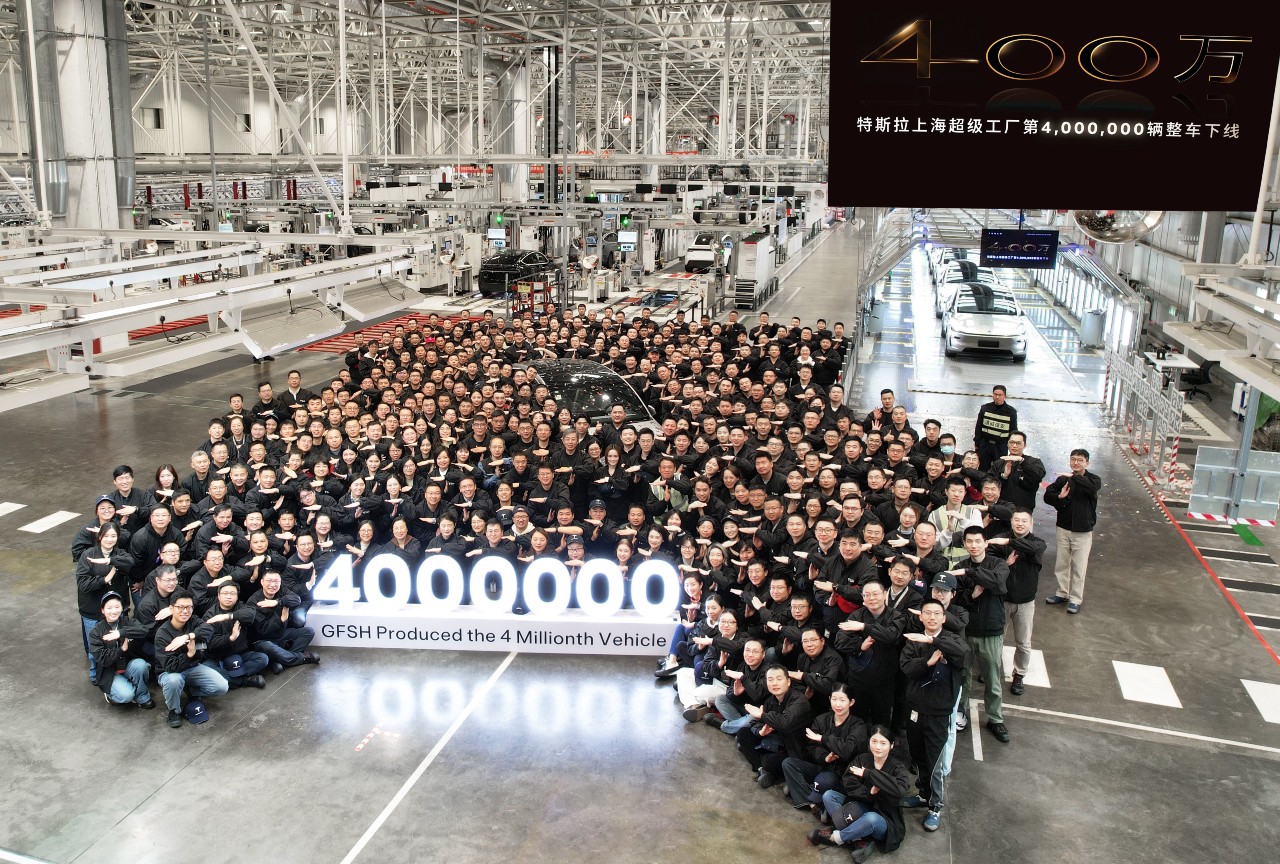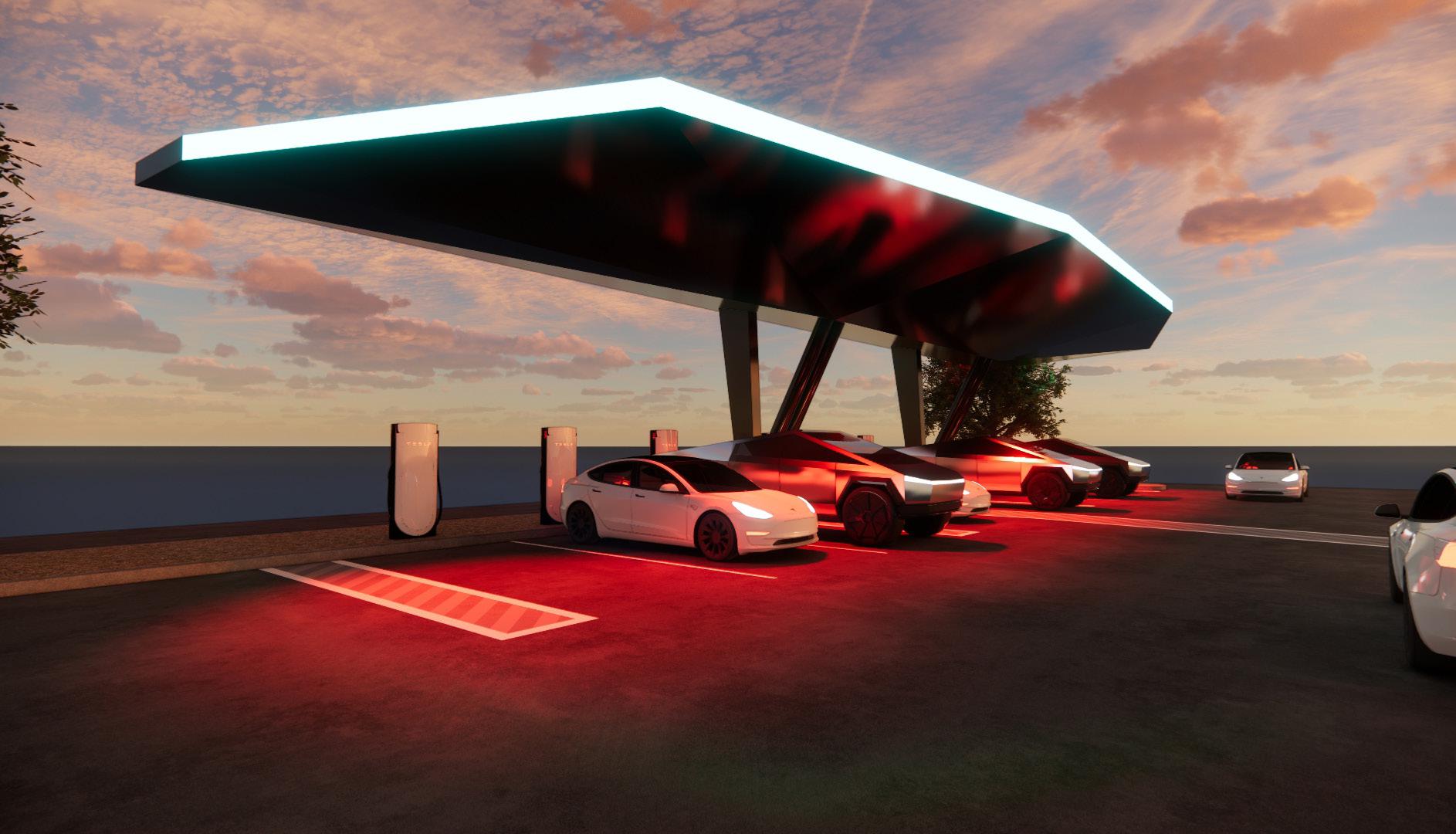News
Tesla price reductions are causing disruptions in the US auto industry: report
American electric vehicle maker Tesla has lowered prices on its entire Model S3XY lineup in the United States, with some vehicle variants receiving as much as 20% off their previous price. The strategy has had a ripple effect across the automobile industry, and it has put pressure on competitors in the EV sector.
Tesla’s price reductions have received mixed reactions among investors and Wall Street analysts, with some arguing that the move was a response to declining demand. Others, on the other hand, have noted that Tesla’s lower prices are a strategy that could put pressure on competitors, especially since popular variants of vehicles like the Model 3 and Model Y are now eligible for a $7,500 federal tax credit.
Analysts have noted that it is clear Tesla’s price cuts have resulted in the EV maker undercutting its competition in the other electric vehicle sector. The lower vehicle prices have had a negative impact on the value of used Teslas as well, with some dealers stating that the Teslas in their inventory experienced a decline of several thousand dollars overnight, as noted in a report from The Wall Street Journal.
Bank of America analyst John Murphy noted that traditional car manufacturers, particularly those without Tesla’s scale in electric cars, are currently facing challenges in terms of profit margins or are losing money on their respective plug-in offerings. With this in mind, Tesla’s recent price cuts might lead to further cost reduction efforts from rival car companies — or even potentially trigger a price war in the EV segment.
“These price cuts are likely to make business even more difficult, just as they are attempting to ramp production of EV offerings,” Murphy noted.
A number of veteran automakers have responded somewhat to Tesla’s price cuts. A spokesman for General Motors has noted that the veteran automaker is keeping an eye on Tesla’s strategy, but the lower prices of the S3XY lineup has not had any significant impact on GM. “It does underscore the value of having a broad EV portfolio at multiple price points, which is exactly what we’re developing,” the GM spokesperson noted.
A spokesperson for Ford, on the other hand, noted that the veteran automaker reported record sales for its Mustang Mach-E all-electric crossover last year. The spokesperson also noted that the demand for its EV lineup, which includes the F-150 Lightning, has been high, and thus, Ford is keeping a close eye on the electric car market to maintain its competitive edge.
Data from research firm Motor Intelligence shows that Tesla accounted for about 65% of the total electric vehicle sales in the United States in 2022. That’s far ahead of Ford’s 7.6% and General Motors’ 3.5%. Despite this, both the GM CEO Mary Barra and Ford CEO Jim Farley have set the goal of eventually surpassing Tesla as the top-selling EV in the country at some point in the future.
Tesla’s price cuts, if any, appear to have caused a rise in interest in the company’s electric cars. As per Edmunds, the number of people researching Tesla vehicles increased significantly after the price cuts were announced. Edmunds noted that the Model Y was the second most researched vehicle on their website for the week ending January 15, a vast improvement from its place as the 70th most researched car the week before. Tenet, a firm that specializes in providing financing services to EV buyers, also observed that applications for Tesla vehicle financing tripled soon after the S3XY lineup’s price cuts in the United States were rolled out.
Don’t hesitate to contact us with news tips. Just send a message to simon@teslarati.com to give us a heads up.

News
Tesla announces major milestone at Gigafactory Shanghai
First deliveries started in December 2019, with the first units being given to employees. By the end of 2020, the plant was building cars at a run rate of around 150,000 vehicles annually.

Tesla has announced a major milestone at its Chinese manufacturing facility, Gigafactory Shanghai, confirming on Monday that it had built its four millionth vehicle.
Tesla Gigafactory Shanghai first started building cars back in October 2019 with Model 3 assembly, just ten months after the company broke ground on the plant’s 86-hectare piece of land.
First deliveries started in December 2019, with the first units being given to employees. By the end of 2020, the plant was building cars at a run rate of around 150,000 vehicles annually. Production continued to ramp up, and by September 2023, less than three years after it started building Tesla’s EVs, it had built its two millionth vehicle.
Fast forward to December 2025, and Tesla has confirmed that four million cars have rolled off of production lines at the plant, a major milestone in the six short years it has been active:
Produced our 4 millionth vehicle at Gigafactory Shanghai🎉
Thanks to all our owners and supporters❤️ pic.twitter.com/DayVXUr220— Tesla Asia (@Tesla_Asia) December 8, 2025
The capacity at Giga Shanghai is exceeding 950,000 vehicles per year, and this year, the company has delivered 675,000 cars through the first three quarters. It is also the only plant to manufacture the Model Y L, a longer wheel-based configuration of the all-electric crossover that is exclusive to the Chinese market.
Gigafactory Shanghai’s four million cars have not all stayed within the domestic market, either. For a considerable period, the factory was exporting a significant portion of its monthly production to Europe, helping Gigafactory Berlin supplement some Model Y volume and all of its Model 3 deliveries. This is due to the Berlin plant’s exclusive production plans for the Model 3.
The site is one of the most crucial in the company’s global plans, and Gigafactory Shanghai’s incredible pace, which has led to four million production units in just about six years. It’s fair to say that it won’t be long until we’re seeing Tesla celebrate the plant’s five millionth vehicle produced, which should happen sometime late next year or in early 2027, based on its current manufacturing pace.
The company also builds the Megapack on the property in an adjacent Megafactory.
News
Tesla gamifies Supercharging with new ‘Charging Passport’
It will also include things like badges for special charging spots, among other metrics that will show all of the different places people have traveled to plug in for range.

Tesla is gamifying its Supercharging experience by offering a new “Charging Passport,” hoping to add a new layer to the ownership experience.
While it is not part of the Holiday Update, it is rolling out around the same time and offers a handful of cool new features.
Tesla’s Charging Passport will be available within the smartphone app and will give a yearly summary of your charging experience, helping encapsulate your travel for that year.
It will also include things like badges for special charging spots, among other metrics that will show all of the different places people have traveled to plug in for range.
Tesla has just introduced “Charging Passport,” a new yearly summary of your charging.
• Charging badges: Iconic Charging badge (for visiting places like the Tesla Diner, Oasis Supercharger, etc), Explorer badge, green saver badge, etc.
• Total unique Superchargers visited
•… pic.twitter.com/c1DHTWXpj7— Sawyer Merritt (@SawyerMerritt) December 8, 2025
Tesla will include the following metrics within the new Charging Passport option within the Tesla app:
- Charging badges: Iconic charging badges for visiting places like the Tesla Diner, Oasis Supercharger, etc., Explorer Badge, and more
- Total Unique Superchargers Visited
- Total Charging Sessions
- Total Miles Added during Charging Sessions
- Top Charging Day
- Longest Trip
- Favorite Charging Locations
This will give people a unique way to see their travels throughout the year, and although it is not necessarily something that is needed or adds any genuine value, it is something that many owners will like to look back on. After all, things like Spotify Wrapped and Apple Music Replay have been a great way for people to see what music they listened to throughout the year.
This is essentially Tesla’s version of that.
With a handful of unique Superchargers already active, Tesla is also building some new ones, like a UFO-inspired location in New Mexico, near Roswell.
Tesla is building a new UFO-inspired Supercharger in the heart of Alien country
News
Tesla launches its coolest gift idea ever just a few weeks after it was announced
“Gift one month of Full Self-Driving (Supervised), which allows the vehicle to drive itself almost anywhere with minimal intervention.”

Tesla has launched its coolest gift idea ever, just a few weeks after it was announced.
Tesla is now giving owners the opportunity to gift Full Self-Driving for one month to friends or family through a new gifting program that was suggested to the company last month.
The program will enable people to send a fellow Tesla owner one month of the company’s semi-autonomous driving software, helping them to experience the Full Self-Driving suite and potentially help Tesla gain them as a subscriber of the program, or even an outright purchase.
Tesla is going to allow owners to purchase an FSD Subscription for another owner for different month options
You’ll be able to gift FSD to someone! https://t.co/V29dhf5URj
— TESLARATI (@Teslarati) November 3, 2025
Tesla has officially launched the program on its Shop. Sending one month of Full Self-Driving costs $112:
“Gift one month of Full Self-Driving (Supervised), which allows the vehicle to drive itself almost anywhere with minimal intervention. All sales are final. Can only be purchased and redeemed in the U.S. This gift card is valued at $112.00 and is intended to cover the price of one month of FSD (Supervised), including up to 13% sales tax. It is not guaranteed to cover the full monthly price if pricing or tax rates change. This gift card can be stored in Tesla Wallet and redeemed toward FSD (Supervised) or any other Tesla product or service that accepts gift card payments.”
Tesla has done a great job of expanding Full Self-Driving access over the past few years, especially by offering things like the Subscription program, free trials through referrals, and now this gift card program.
Gifting Full Self-Driving is another iteration of Tesla’s “butts in seats” strategy, which is its belief that it can flip consumers to its vehicles and products by simply letting people experience them.
There is also a reason behind pushing Full Self-Driving so hard, and it has to do with CEO Elon Musk’s compensation package. One tranche requires Musk to achieve a certain number of active paid Full Self-Driving subscriptions.
More people who try the suite are likely to pay for it over the long term.








